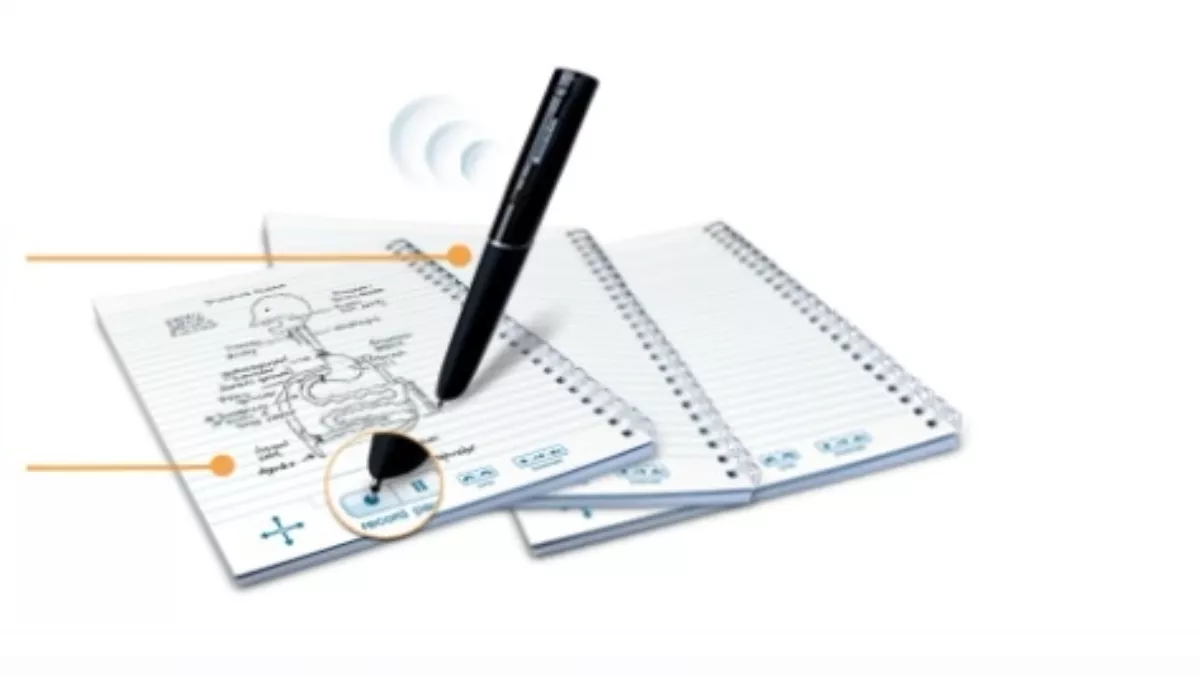
Livescribe Smartpen aids students with notetaking
The Livescribe Smartpen is a compact tool that records what a user hears or writes and is targeted at students as an assistive aid, as well as other situations which require note taking tools, such as meetings or conferences.
The Livescribe 3 debuted in 2013 and was only available for iOS, but an Android capable pen is said to be on its way.
The Android version is said to include the key features of the iOS version, such as the ability to download notes and convert to digital text.
Livescribe Desktop allows users to upload, save and play back notes and audio via a Mac or PC. Here users can also organise digital notes in custom notebooks.
With the pen, users can share notes or recordings as a PDF, audio file or pencast (an interactive flash movie of handwritten notes and audio). Pencasts can be published online, shared through email or posted on Facebook.
Downloadable apps include dictionaries, translators, time savers, games and more.
In the New Zealand Apple store, the Livescribe Echo pen has a price of NZ$219.95
In order to see how the Livescribe pen would work in a classroom context, The Yale Center for Dyslexia and Creativity (YCDC) asked college and primary school students with dyslexia to use the Livescribe Echo pen and observed how it was used.
Each student was privately training for 90 minutes to use the device and had access to other related training aids, such as the Livescribe getting started guide and Smartpen 101 tutorial.
Over the course of a six week project, students were contacted once a week to talk about their experience using the smartpen.
Results were varied, with some students finding the pen very helpful and others not finding it particularly helpful.
The oldest participant used the pen when he had to take extensive notes. In classes where note taking was minimal, he would use the audio recording device and would listen to the recording later and take notes where required. He would store these notes in a customised notebook he created on his computer.
According YCDC, he found the pen particularly useful when he was studying for exams.
Another student, who was in year eight, also found the pen helpful. He regularly used the bookmarking system, which allows a user to mark important information, and also created custom notebooks and emailed notes to his peers.
One student found the pen facilitated her learning, but due to her auditory-processing difficulties did not find the audio recording feature helpful for listening back to classroom discussions.
YCDC says, "Recording classroom discussions and taking fewer notes allows the dyslexic student to spend more time listening and learning.
"When returning to the material for homework or review, students have an opportunity to listen to important information a second time, add notes that may be of significance, and review what has already been written.
However, the students with significant auditory-processing difficulties may be challenged by listening to the audio playbacks, says YCDC.
Overall, YCDC finds the Livescribe smartpen can be used as an assistive aid in the classroom, particularly with its note-taking features, but the extent to which it can help is dependent on the student and their learning difficulties.


